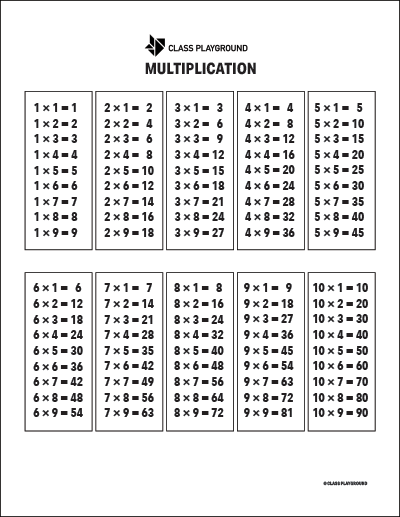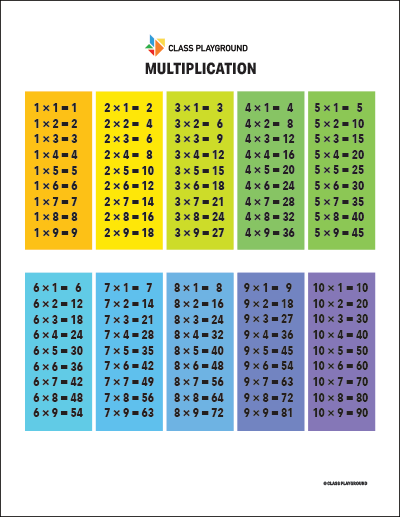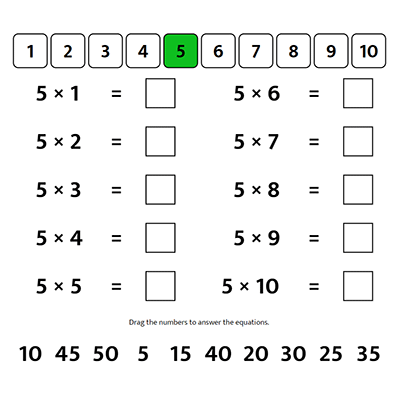What is a Multiplication Table?
A multiplication table is a structured chart, typically in a grid format, that displays the results of multiplying two numbers. It usually ranges from 1 to 10 or 12 on both axes but can be expanded based on the educational level and abilities of the students. This visual aid is crucial for children to learn, understand, and memorize multiplication facts, making it an indispensable tool in elementary mathematics education.
Why Use Multiplication Tables?
Multiplication tables play a pivotal role in elementary education for several reasons:
- Foundation for Advanced Mathematics: Mastery of multiplication is a prerequisite for understanding advanced mathematical concepts such as fractions, measurements, and problem-solving. Students who struggle with multiplication often find these more complex areas challenging.
- Real-world Applications: Multiplication isn’t just an abstract concept confined to the classroom — it has practical uses in daily life. From splitting a pizza among friends to calculating the cost of multiple items, multiplication is frequently encountered in everyday situations.
How to Effectively Use Multiplication Tables
- Incremental Learning: Start with smaller numbers such as twos and threes, before gradually moving on to larger ones. This step-by-step approach prevents students from feeling overwhelmed and helps them build confidence.
- Pattern Recognition: Encourage students to identify number patterns. For example, all numbers in the two times table end with either a zero, two, four, six, or eight. Recognizing these patterns can make memorization easier and more fun. You can also show how multiplication is commutative (e.g., 4 × 5 = 5 × 4), which reduces the amount of memorization needed. Try interactive tools like the Number Pattern game to reinforce this skill.
- Practice and Reinforcement: Regular practice is key. Worksheets, flashcards, songs, and online tools like the Toy Theater Times Table give students plenty of opportunities to build fluency.
- Real-World Application: Show students how multiplication applies to real-life contexts like shopping or sports statistics. Making these connections keeps math relevant and meaningful.
Activities
- Multiplication Races: Divide the class into teams and give multiplication problems to solve. The first team to complete them correctly wins. For extra practice, try the digital Multiply Race game.
- Times Table Bingo: Create bingo cards with products in each square. Call out multiplication problems, and students mark the corresponding product. The first to complete a row wins. You can also try Toy Theater Bingo for an interactive version.
- Multiplication Art: Have students create artwork using arrays or number lines that represent different multiplication facts, blending creativity with math practice.
- Flash Cards: Quick practice with flash cards builds recall speed. Turn it into a timed game to keep students motivated.
- Multiplication Memory Game: Make cards with multiplication problems and matching answers. Students flip cards to find pairs, reinforcing memory and fact fluency.
Multiplication tables are more than just memorization tools—they’re the foundation of math fluency. By combining strategies, activities, and engaging online resources, teachers can help students build the skills and confidence needed for long-term success in mathematics.



